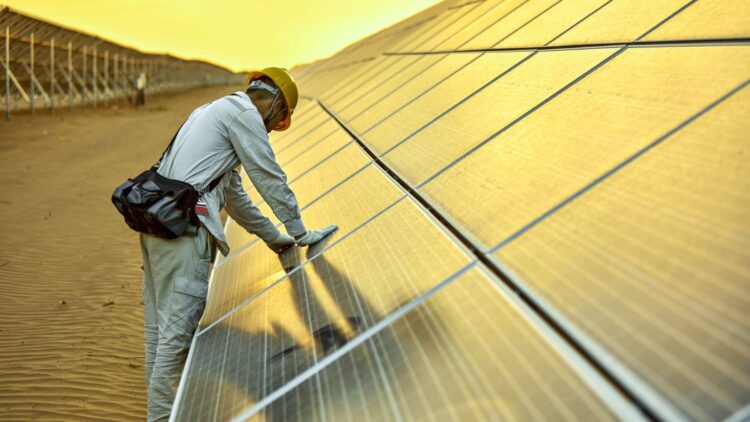Plenty of countries are making concerted efforts to improve their solar panel setups, but they usually run into issues like lack of available suitable space to put on as many solar panels as possible. China however, does not seem to have this problem, and they have found the perfect place to mount as many solar panels as they can produce. In an area nicknamed the “Sea of Death”, located out in the middle of the Kubuqi Desert in Inner Mongolia a massive solar project is unfolding.
Known for its endless dunes and scorching heat, this inhospitable place is being reinvented as a clean energy hub, and so the “Sea of Death” is now being transformed into the “Solar Great Wall.” The project is still mid construction and is supposed to be finished in 2030, but this impressive array will be useful well before that, in fact, it is already producing plenty of energy and transforming the landscape from a harsh terrain to an almost thriving ecosystem.
When it is done, this solar setup will stretch about 400 kilometers long and 5 kilometers wide and will output 100 gigawatts, which should be enough to power a city the size of Beijing.
The new solar setup in China, a marvel of engineering and conservation
The location of this new “Solar Great Wall” is not a coincidence. Besides an enormous amount of space, this location has a few perks that make it perfect for this kind of mass setup. It is relatively close to major industrial zones and receives a lot of sunlight through the year. This land is almost useless otherwise due to the conditions of the area, so utilizing it for a clean energy purpose gives the country an additional asset.
Construction is under way and as panels are installed they begin producing energy, and as of now, engineers have already installed around 5.4 gigawatts worth of solar panels. The transformation is evident and it even appears in satellite images, but the most impressive structure continues to be the Junma Solar Power Station. It is shaped like a galloping horse and it has made headlines for holding the Guinness World Record for the largest solar panel image.
While it might seem like a silly gimmick, it outputs about 2 billion kilowatt-hours annually, powering between 300,000 and 400,000 people and is a good showcase of the Chinese emphasis in renewable energy.
China’s interest in renewable energies is not new. Since 2014 they have been making huge strides in the industry to try to offset some of the expenses and damage from their huge production factories. And they have done it quickly, right now they have got over 386,000 megawatts of installed solar capacity. That is more than half of the world’s total. Between 2017 and 2023, China added an average of 40,000 megawatts of solar capacity every single year and the Solar Great Wall is just the last approved project that will contribute to these efforts.
But it is not just about producing energy, it is also about the environment. China, as many other countries us battling desertification, especially in these desert areas where it is so hot. Since panels provide shade to the area below them, it lowers the temperature of the soil and allows for lower evaporation rates and makes the microclimate more suitable for growing vegetation.
At some point, this part of the desert could actually support crops and grasses, turning barren dunes into fertile ground. The panels also help stabilize the sand and reduce erosion from wind, rehabilitating a devastated ecosystem, which will also help with things like climate change.

